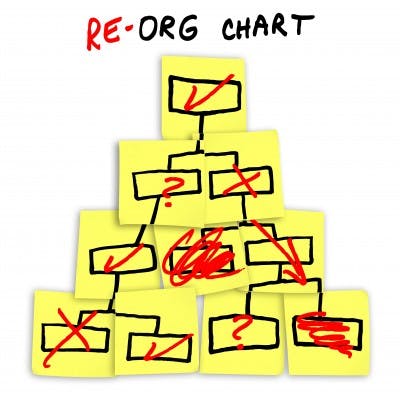Are you leading the team you need? Or leading the team you have?
Last week. I wrote a post about recognizing if you have someone on your team who is not strategic enough. You keep hoping that they will become more strategic. I can tell you how that play ends — they won’t.
If you want to make strategic change you need strategic people.
I promised to come back this week with some advice about how to change your organization if you don’t have the right people.
1. Start with the desired outcome for the business
As I so often say, “What is your desired outcome?”
Get really clear about what business outcomes you need to drive, then start to think about what the ideal team would be to drive those outcomes.
Really understand and articulate the specific work, strategic problem solving, and outcomes that your team needs to drive.
Then think through what the specific individuals on your team need to deliver to drive those business outcomes, not just now but in the future.
2. Next, draw your ideal blank-sheet org chart
Start with a blank sheet of paper. Really start fresh. Don’t consider the current roles or who you already have on the team at all.
Just think about what the BUSINESS really needs and what outcomes you are personally on the hook for. Then draw a picture of what the ideal team would be to deliver what you really need done.
3. Now, clearly define the specific NEW roles
When you define the new role, don’t just regurgitate “responsibilities.”
Really work to articulate the new stuff that is different. This is the key.
I’m talking about things like the ability to influence adversaries in your absence, or recognize broken processes and invent and implement new ones, or be competent and credible at executive level communications, or personally recognize the need to transform business, partner, or sales models.
Once you define the new org and the new roles, you have just created a clear and actionable picture of your goal.
4. Now it is your job to make that picture come true
Oops! It is likely that your current team does not fit into this ideal structure.
Two things will likely become clear at this point:
- Some of your current people will people obviously map into the new roles. Put them there.
- You will end up with both some empty boxes AND some extra people.
The hard part
The real leadership challenge comes in when you need to fill the empty boxes and deal with the extra people.
 There is a straightforward and business focused way to move people off your team when you can’t fire them for being poor performers — and you don’t want to fire them because they are good, loyal, hard-working people.
There is a straightforward and business focused way to move people off your team when you can’t fire them for being poor performers — and you don’t want to fire them because they are good, loyal, hard-working people.
It’s not personal. It’s a new role. Their old role does not exist any more.
The role is new and different. They are welcome to interview. If they don’t make the cut, move them sideways, down, or out. You never have to “take someone out of their job.”
You eliminate the old-world role and paint a clear picture of the new one necessary to drive the new business outcome. Often the person will see the gap before you have to explain it.
Your job is not to cover for people who are not up to the job you need to get done. Your job is to build a team that can drive the business forward.
This seems harsh — is it really necessary?
If you have to eliminate jobs to build a stronger team, that doesn’t prevent you from being kind. You can help the people you move out get into their next job. It wasn’t a poor-performance issue; you just needed different roles and this person was no longer a fit. You are still in a position to help and provide referrals.
I have found that when people are struggling in the wrong roles and not doing well enough, taking them out of the role gives them a new opportunity to move to a role where they can thrive and excel.
After getting over the initial shock and disappointment, they are often happier.
The other way to look at it is that you fail to build a team that can deliver the necessary business outcomes, you may be putting your whole team and your own job at risk.
The tougher the business challenges, the stronger the team you need, and the more risky the strategy of protecting people out of loyalty instead of performance becomes.
This was originally published on Patty Azzarello’s Business Leadership Blog. Her latest book is Rise: How to be Really Successful at Work and LIKE Your Life.
